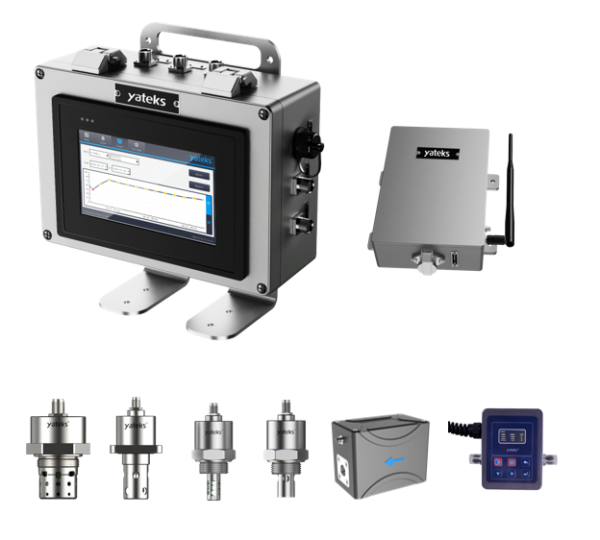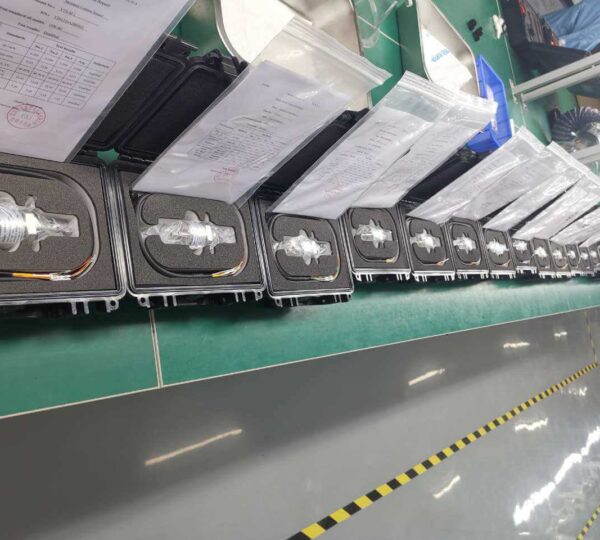How to Choose the Right Oil Condition Monitoring Sensors
This is a highly professional and practical question. Selecting the right oil condition monitoring sensor is a systematic project that requires comprehensive consideration of multiple factors. Below is a clear and comprehensive selection guide for you.
Step 1: Define Your Monitoring Objectives (Why are you monitoring?)
This is the foundation for all subsequent choices. What problem are you trying to solve with the sensor? Different objectives correspond to different sensor types.
-
Equipment Condition Monitoring & Predictive Maintenance: This is the most common need. By monitoring the degradation of oil quality, potential equipment failures can be detected early to avoid unplanned downtime.
-
Oil Life Management: Determine the optimal oil change interval to avoid over-maintenance (changing oil too early) or insufficient lubrication (changing oil too late).
-
Specific Fault Diagnosis: For example, monitoring water content to prevent oil emulsification, or monitoring metallic particles to diagnose wear locations.
Step 2: Understand Key Oil Condition Parameters and Corresponding Sensors
Based on your monitoring objectives, select the parameters you need to monitor. Here are the most critical parameters in industry and their sensor technologies:
| Monitoring Parameter | Issues It Reveals | Primary Sensor Technologies | Characteristics & Applications |
|---|---|---|---|
| Oil Viscosity | Core Lubrication Performance: Oil degradation, contamination, wrong oil added | Vibrating Element, Micro-capillary | One of the most critical indicators. Online viscosity sensors directly reflect the oil’s lubricating ability. Essential for engines, gearboxes, etc. |
| Dielectric Constant/ Permittivity | Overall Oil Quality: Oxidation, additive depletion, contamination | Capacitive | A comprehensive and cost-effective indicator of oil condition. However, readings can be influenced by various factors (water, fuel, oxidation products) and require analysis alongside other parameters. |
| Water Content | Contamination & Oil Degradation: Condensation, leaks, leading to oil film rupture, corrosion | Capacitive, Thin-Film Polymer | Extremely impactful on equipment lifespan. Online water sensors can detect water ingress in real-time, which is crucial for equipment in humid environments or using water cooling systems. |
| Particle Count / Contamination | Wear & Cleanliness: Wear debris, dirt, oil degradation products | Optical Obscuration, Laser Imaging | The “killer” of hydraulic systems. Particle counters are standard for online monitoring in hydraulic systems. Alarm thresholds can be set according to ISO cleanliness standards. |
| Metallic Wear Debris | Wear State: Indicates wear of specific components like bearings, gears, pistons | Inductive, X-ray Fluorescence (XRF) | Cutting-edge technology for online wear monitoring. Inductive sensors can distinguish between ferrous and non-ferrous metallic particles, providing immense value for diagnosing early-stage failures (e.g., fatigue pitting). |
| Oil Temperature | Operating Condition: Cooling failure, excessive load, increased friction | PT100/RTD, Thermocouple | A fundamental and essential parameter. Often integrated with other sensors. |
| Oil Pressure | System Operating Condition: Pump performance, filter clogging, leaks | Piezoelectric, Strain Gauge | A fundamental parameter, critical for hydraulic and lubrication systems. |
Step 3: Comprehensive Consideration of Selection Factors (How to make the decision?)
After understanding the parameters, you need to make a comprehensive trade-off from the following dimensions:
-
Application Scenario & Equipment Criticality
-
Critical Assets (e.g., main generators, large compressors, wind turbine gearboxes): Recommend multi-parameter integrated sensors that monitor viscosity, water, permittivity, temperature, and particle count simultaneously for the most comprehensive protection.
-
General Assets (e.g., pumps, fans): Can choose sensors for core parameters, such as permittivity + water + temperature, for cost-effective condition monitoring.
-
Hydraulic Systems: A Particle Counter is the primary choice, complemented by water and temperature sensors.
-
-
Sensor Performance Specifications
-
Accuracy and Range: Does the accuracy meet your requirements? Does the measurement range cover the oil’s entire lifecycle from new to spent?
-
Response Time: Do you need real-time data or trend data? Some sensors (e.g., viscosity) have slower response times.
-
Stability and Service Life: Is the sensor itself durable? Wear and contamination of the probe can affect long-term readings.
-
-
Integration and Installation
-
Installation Method:
-
In-line: Installed directly in the oil line (main flow or bypass) for real-time, continuous monitoring.
-
Portable: Periodically connected to sample points on equipment for measurement, suitable for multi-point, periodic inspections.
-
-
Interface and Communication: What is the sensor’s output signal (4-20mA, 0-5V, Modbus, IO-Link)? Can it be easily integrated into your PLC, SCADA, or condition monitoring system?
-
Mechanical Interface: Does it fit the existing measurement points on the equipment (e.g., ISO, NPT threads)? Are additional adapters or mounting bosses required?
-
-
Total Cost of Ownership (TCO)
-
Initial Purchase Cost: The price of the sensor itself.
-
Installation and Integration Cost: Includes piping modifications, electrical wiring, system integration, etc.
-
Operation and Maintenance Cost: Does the sensor require regular calibration? Does the probe need cleaning or replacement? This is a long-term cost that requires close attention.
-
-
Supplier and Technical Support
-
Brand and Reliability: Choose brands with a good reputation in the industry.
-
Technical Support and Service: Can the supplier provide installation guidance, training, and timely after-sales service?
-
Data Analysis Capability: Does the supplier provide supporting software or a cloud platform to help you analyze data, set alarms, and generate reports?
-
Selection Process Summary
-
Define Requirements: What is my primary concern? (Wear? Contamination? Oil degradation?)
-
Determine Parameters: Based on needs, select 1-3 most critical monitoring parameters.
-
Evaluate the Asset: How critical is the equipment? What is the budget? What are the existing system interfaces?
-
Screen Technologies: For each parameter, understand the different sensor technologies and their pros/cons.
-
Select Product: Choose the specific model by balancing performance, integration, cost, and supplier.
-
Plan Implementation: Plan the installation location, integration scheme, and data management process.
Practical Advice
-
Start Simple: If unsure, start with an integrated sensor that combines temperature, water, and permittivity. It can solve most common oil-related problems.
-
Reference Success Stories: Look at what sensors are being used on similar equipment in your industry. This is the most direct reference.
-
Combine with Offline Oil Analysis: Online sensors provide real-time trends; offline lab analysis provides precise composition and diagnosis. Combining both is the best oil analysis strategy. Initially, use offline analysis to validate online sensor readings.
I hope this detailed guide helps you make an informed choice. If you can provide a more specific application scenario (e.g., for a wind turbine gearbox, marine engine, or hydraulic power unit), I can offer more targeted advice.



